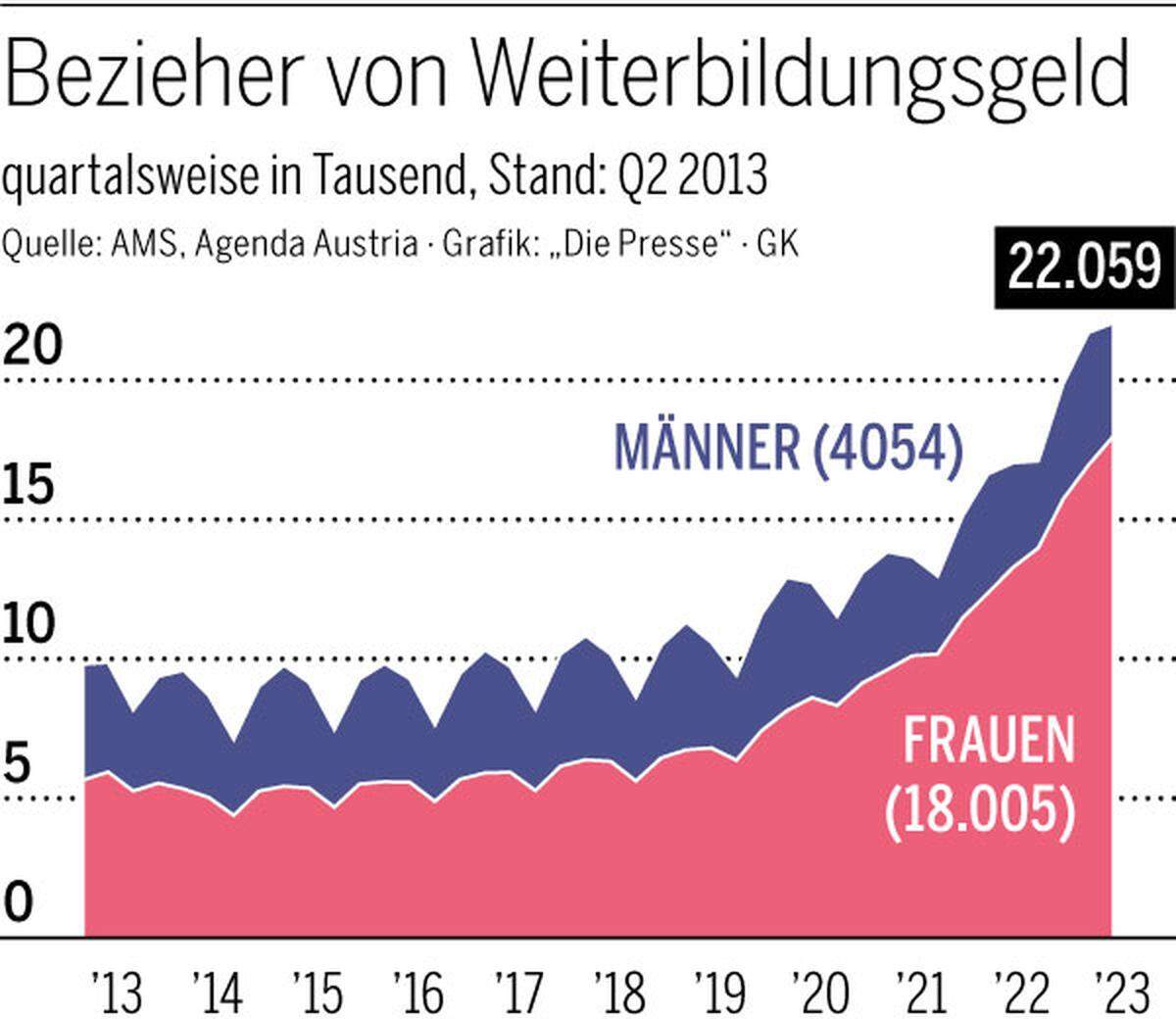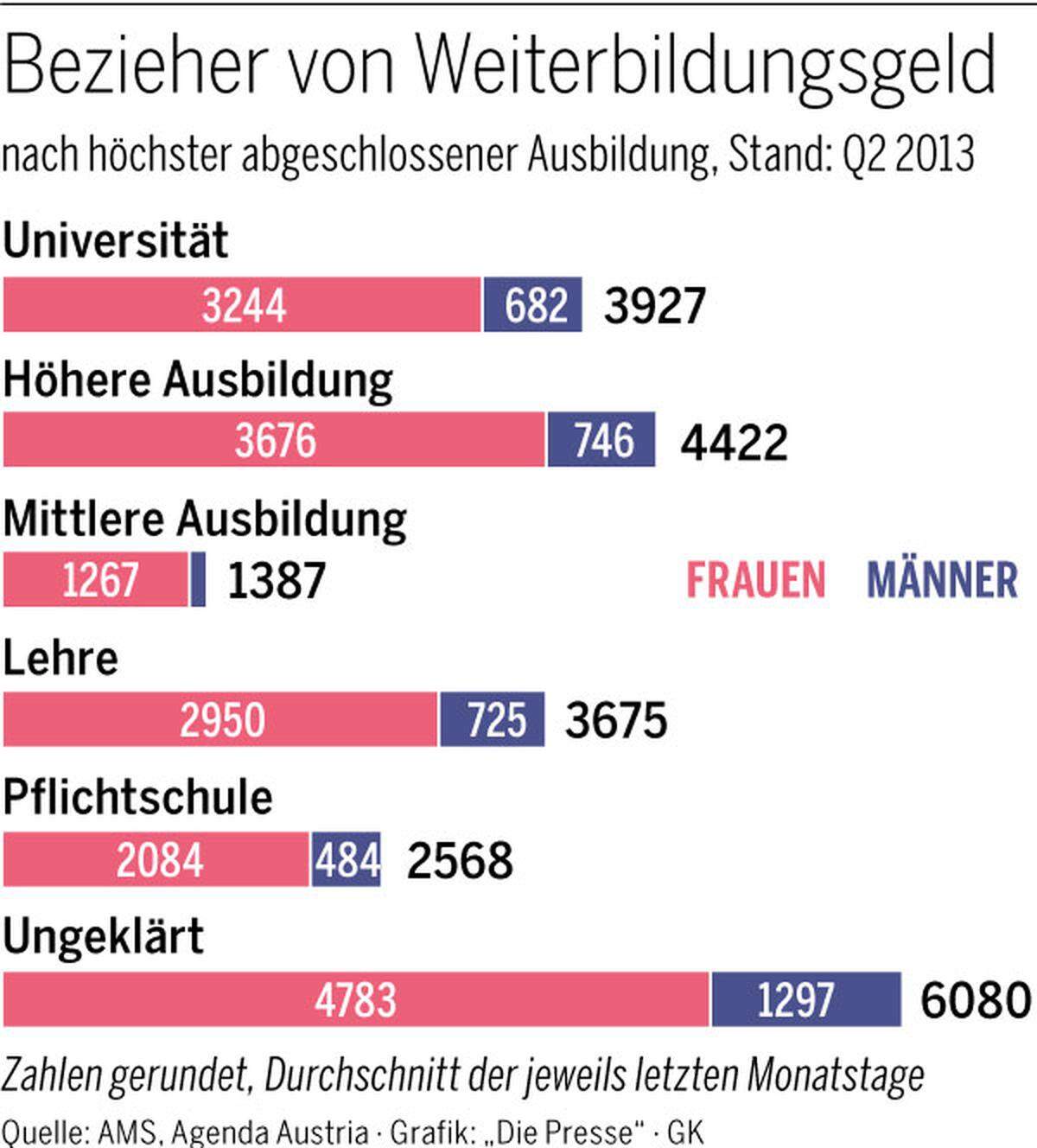State spending on academic leave is through the roof. But academic leave is of no use to those once discovered. The Labor Minister is looking forward to reforms this legislative term.
Vienna Up to one year of leave from work, funded by the state. It's really good to be true in Austria. This is possible through educational leave. Anyone who has been working subject to social security contributions for at least six months without interruption can apply for educational leave. Almost every request is granted. During educational leave, you will receive a training allowance in the amount of notional unemployment benefit for two to twelve months. This is usually 55 percent of your last net salary. You must provide proof of training, but the requirements are manageable.
Word is spreading that it's not a bad offer. The number of recipients, and thus government spending, is skyrocketing. From 2013 to 2019, the annual expenditure on training money increased from 109 million euros to 140 million euros. The big jump happened in recent years: from 2022 to 2023, spending increased by 35 percent to 337 million euros, an analysis by Agenda Austria shows. Anyone who goes on educational leave will have their job suspended, but will still have health, accident and pension insurance. It is funded from unemployment insurance. If you include social security costs, the cost of educational leave last year was already 512 million euros.
The problem is that academic leave is not serving its purpose. It was introduced in 1998 with a sensible idea. Those with poor prospects in the labor market, such as those with low qualifications and/or the elderly, should be given the opportunity to continue their training and thus improve their employment prospects. “It is clearly not working,” Carmen Treml, an economist at Agenda Austria, writes in her analysis.
The trend continues that the already well-educated primarily benefit from educational leave. According to data from the Public Employment Service (AMS), 22,059 people received further training allowance as part of educational leave in the second quarter of 2023. Of these, only 2,568 had a compulsory school leaving certificate as their highest level of education. 3,927 recipients were academics and 4,422 had higher education such as a high school diploma. However, Treml points out that statistical studies have gaps. One in four recipients is unclear about what training they have.

The Court of Auditors has criticized academic leave
In the second quarter of 2023, 18,005 women and 4,054 men received further training allowance. More and more women are using educational leave to extend their maternity leave. The Court of Auditors also criticized it in a much-discussed report last year. In 2021 (the most recent data), 69 percent of women received additional training allowance immediately after parental leave. With all the negative consequences: Returning to work after a long break is usually very difficult, not easy, says Treml. “The long-term effects on lifetime employment earnings are serious.” The Court of Auditors also found evidence that the benefits of educational leave for work and income were lower for women than for men.
Labor Minister Kochhar has announced reforms in educational leave. There is already a broad agreement with community partners, he said last week. He expects a draft law before the election.
